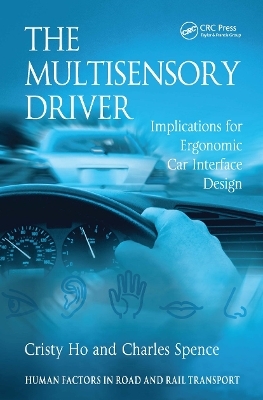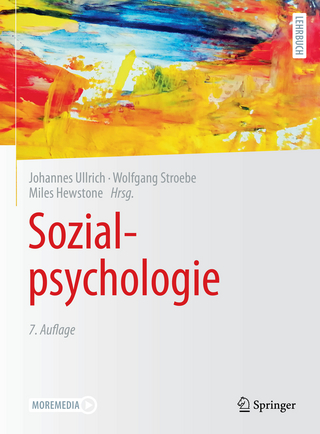
The Multisensory Driver
Implications for Ergonomic Car Interface Design
Seiten
2008
Ashgate Publishing Limited (Verlag)
978-0-7546-7068-1 (ISBN)
Ashgate Publishing Limited (Verlag)
978-0-7546-7068-1 (ISBN)
This book is dedicated to furthering the design of ergonomic multisensory interfaces by highlighting recent evidence in this area emerging from the fast-growing field of cognitive neuroscience. It focuses primarily on two aspects of driver information-processing: multisensory interactions and the spatial distribution of attention in driving.
Driver inattention has been identified as one of the leading causes for car accidents. The problem of distraction while driving is likely to worsen, partly due to increasingly complex in-car technologies. However, intelligent transport systems are being developed to assist drivers and to ensure a safe road environment. One approach to the design of ergonomic automobile systems is to integrate our understanding of the human information processing systems into the design process. This book aims to further the design of ergonomic multisensory interfaces using research from the fast-growing field of cognitive neuroscience. It focuses on two aspects of driver information-processing in particular: multisensory interactions and the spatial distribution of attention in driving. The Multisensory Driver provides interface design guidelines together with a detailed review of current cognitive neuroscience and behavioural research in multisensory human perception, which will help the development of ergonomic interfaces. The discussion on spatial attention is particularly relevant for car interface designers, but it will also appeal to cognitive psychologists interested in spatial attention and the applications of these theoretical research findings. Giving a detailed description of a cohesive series of psychophysical experiments on multisensory warning signals, conducted in both laboratory and simulator settings, this book provides an approach for those in the engineering discipline who wish to test their systems with human observers.
Driver inattention has been identified as one of the leading causes for car accidents. The problem of distraction while driving is likely to worsen, partly due to increasingly complex in-car technologies. However, intelligent transport systems are being developed to assist drivers and to ensure a safe road environment. One approach to the design of ergonomic automobile systems is to integrate our understanding of the human information processing systems into the design process. This book aims to further the design of ergonomic multisensory interfaces using research from the fast-growing field of cognitive neuroscience. It focuses on two aspects of driver information-processing in particular: multisensory interactions and the spatial distribution of attention in driving. The Multisensory Driver provides interface design guidelines together with a detailed review of current cognitive neuroscience and behavioural research in multisensory human perception, which will help the development of ergonomic interfaces. The discussion on spatial attention is particularly relevant for car interface designers, but it will also appeal to cognitive psychologists interested in spatial attention and the applications of these theoretical research findings. Giving a detailed description of a cohesive series of psychophysical experiments on multisensory warning signals, conducted in both laboratory and simulator settings, this book provides an approach for those in the engineering discipline who wish to test their systems with human observers.
Cristy Ho, is a Daiwa Scholar, at the Daiwa-Anglo Japanese Foundation, Japan and Charles Spence is Professor of Experimental Psychology, at the Oxford University, UK.
Contents: Introduction; Driven to distraction; Driven to listen; The auditory spatial cuing of driver attention; The vibrotactile spatial cuing of driver attention; The multisensory perceptual versus decisional facilitation of driving; The multisensory spatial cuing of driver attention; Conclusions; References; Index.
| Erscheint lt. Verlag | 19.9.2008 |
|---|---|
| Reihe/Serie | Human Factors in Road and Rail Transport |
| Sprache | englisch |
| Maße | 156 x 234 mm |
| Gewicht | 408 g |
| Themenwelt | Geisteswissenschaften ► Psychologie ► Arbeits- und Organisationspsychologie |
| Technik ► Fahrzeugbau / Schiffbau | |
| ISBN-10 | 0-7546-7068-6 / 0754670686 |
| ISBN-13 | 978-0-7546-7068-1 / 9780754670681 |
| Zustand | Neuware |
| Informationen gemäß Produktsicherheitsverordnung (GPSR) | |
| Haben Sie eine Frage zum Produkt? |
Mehr entdecken
aus dem Bereich
aus dem Bereich
neue Beschäftigte erfolgreich integrieren
Buch | Softcover (2024)
Hogrefe (Verlag)
26,95 €
wirksamer führen durch mehr Menschlichkeit
Buch | Softcover (2024)
Vahlen (Verlag)
21,90 €


